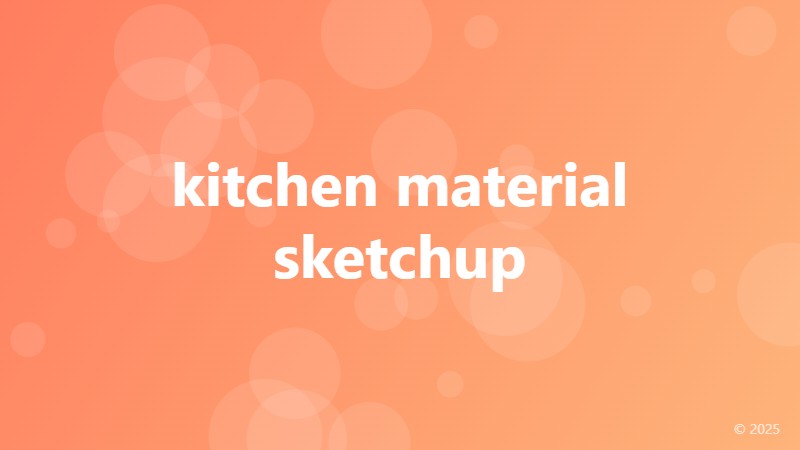kitchen material sketchup

Bringing Your Kitchen Design to Life with Kitchen Material SketchUp
Kitchen design is an art form that requires creativity, precision, and attention to detail. With the rise of technology, designers and architects can now bring their kitchen designs to life using 3D modeling software like SketchUp. One of the key aspects of kitchen design is the selection of materials, and SketchUp provides an excellent platform to explore and visualize different kitchen material options.
Why Choose SketchUp for Kitchen Material Design?
SketchUp is a popular 3D modeling software that offers a range of benefits for kitchen designers and architects. Its user-friendly interface, flexibility, and versatility make it an ideal tool for creating custom kitchen designs. With SketchUp, designers can easily experiment with different kitchen materials, textures, and colors to create a unique and functional kitchen space.
Moreover, SketchUp allows designers to work in a collaborative environment, making it easy to share designs with clients and stakeholders. This feature enables designers to get feedback and make changes in real-time, streamlining the design process and reducing errors.
Exploring Kitchen Material Options in SketchUp
SketchUp offers a vast library of kitchen materials, including countertops, cabinets, flooring, and wall finishes. Designers can browse through the library and select the materials that best suit their design aesthetic. From modern and sleek to traditional and rustic, SketchUp's material library has something for every design style.
In addition to the built-in material library, SketchUp also allows designers to import custom materials from external sources. This feature provides endless possibilities for designers to experiment with unique and innovative materials, giving them the freedom to bring their design vision to life.
Visualizing Kitchen Material Combinations in SketchUp
One of the most significant advantages of using SketchUp for kitchen material design is its ability to visualize material combinations in 3D. Designers can create a 3D model of their kitchen design and apply different materials to various components, such as countertops, cabinets, and flooring.
By visualizing the material combinations in 3D, designers can identify potential design flaws, ensure that the materials work well together, and make informed decisions about the final design. This feature saves time, reduces errors, and ensures that the final design meets the client's expectations.
Conclusion
Kitchen material design is a critical aspect of kitchen design, and SketchUp provides an excellent platform to explore and visualize different kitchen material options. With its user-friendly interface, vast material library, and 3D visualization capabilities, SketchUp is an ideal tool for designers and architects looking to bring their kitchen designs to life.
By leveraging the power of SketchUp, designers can create custom kitchen designs that meet their clients' needs, while also staying within budget and meeting project deadlines. Whether you're a seasoned designer or just starting out, SketchUp is an essential tool for anyone looking to take their kitchen design skills to the next level.